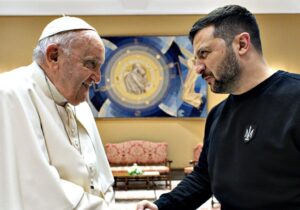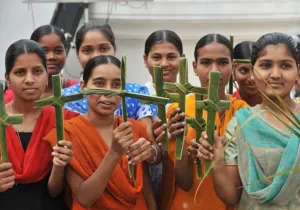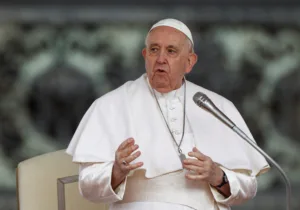Pope Francis’ visit to Iraq was the first of its kind in papal history. The remaining Christians in Iraq long anticipated his trip, including to an Assyrian city just 23 miles (37 kilometers) east of Mosul.
The Islamic State in 2014 ravaged this city, issued an ultimatum to Christians to “convert to Islam, pay a fine, or face death,” and forced them out of their homes. Subsequently, ISIS looted and burned the churches.
Since Iraqi forces and a Christian armed group called the Nineveh Plain Protection Units (NPU) liberated the city, it has witnessed the most successful Christian returnee rate out of all other Christian towns and cities in the post-ISIS reconstruction era.
What is the city’s name? That answer is more complicated than one may think. Before going over the three different names, one must understand that the Middle East is full of revisionist histories when it comes to the renaming of geographic features, and this city is no different.
“Although the city is referenced as early as seventh century AD,” Rakan Al Khayyat, a local Assyrian archeologist states, “there is some evidence that the city was inhabited during the Neo-Assyrian period and even all the way back to around 4,000 BC.”
This is a widely accepted belief of the locals who have ties to the ancient Assyrians. During the Neo-Assyrian period, the area would have been densely populated as Baghdeda’s surrounding areas were famed to contain three different Neo-Assyrian capitals: Nineveh, Dur-Sharrukin, and Kalhu.
Of the three names, Baghdeda is the endonym—a name the inhabitants of the city and their kinfolk commonly use. Inversely, Qaraqosh and al-Hamdaniya are exonyms—a name that foreigners have historically given the city. “The name Baghdeda was mentioned in a thirteenth-century book of Yaqut al-Hamawi,” Al Khayyat said. “The document also mentioned that the town was populated by Christians.”
The exact meaning of the first name, Baghdeda, is up for debate as there are many theories. However, the locals believe that Baghdeda comes from Aramaic Beth (house/land) Gdode (youth), or house/land of the youth.
Although inhabitants most associate the name Baghdeda to the city, the name is unfortunately not popular among foreigners. The city of Baghdeda, as with much of the Middle East, saw an influx migration of Turkic peoples, which influences geographic names.
“As early as the fifteenth century, we see the mention of Qaraqosh as the name of the town,” Al Khayyat said. “This policy continued during Ottoman rule, where Baghdeda was officially renamed Qaraqosh.” The name comes from Turkish kara (black) and kush (bird), or blackbird. This may reference the crows in the area, which loitered around this agricultural hub by the Tigris River and its tributaries.
After more than three centuries of Ottoman Turkish rule, the empire collapsed, and Iraq became a newly formed state under the British Mandate. To distinguish itself from its Turkish past during a rise of Arab nationalism throughout the Middle East, the state forcibly renamed many places with non-Arab names into Arabic.
Baghdeda was no exception, and the Turkish Qaraqosh exonym changed to the Arab al-Hamdaniya exonym. The new name was Arabic for city of albu-Hamd, an Arab tribe that migrated to southern Iraq some three hundred years ago. The government also renamed the district in which the city of Baghdeda sits to Al-Hamdaniya, which remains its legal name today.
The city’s history has been tumultuous, such as when its 50,000 Assyrian Christian residents fled their homes as ISIS conquered the Nineveh Plain region. But since then some 28,000 have returned, a success story compared to all other Christian areas in the Nineveh Plain.
Overall, Baghdeda remains a center of Assyrian and Christian activity in Iraq and will face many challenges, the least of which is its complex naming issue. Many locals hope that the pope’s quick visit to the city will bring new life to the city that has witnessed so much death and turmoil.






 Sponsor a student for Christianity & National Security 2024
Sponsor a student for Christianity & National Security 2024